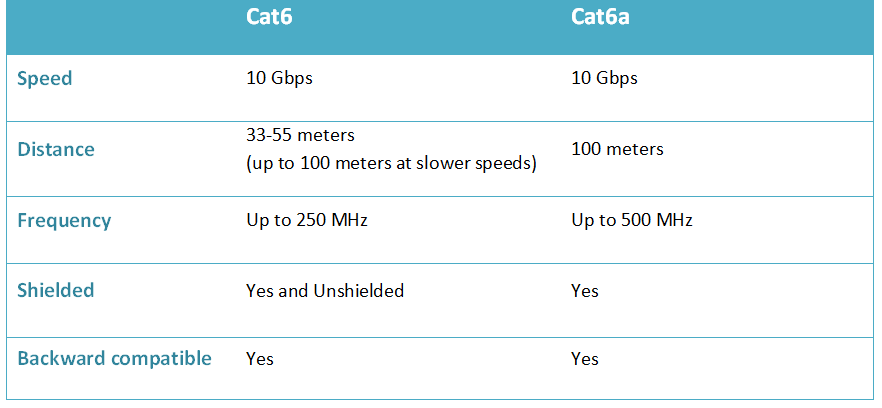Cat6 and Cat6a - What's the Difference?

Cat6 and Cat6a are both very popular standards for Ethernet cables, but how do you decide which one you need? Depending on your project, one may work better than the other. To help with your decision, we'd like to give you a blow-by-blow product comparison.
Category 6a cable is the latest iteration of Gigabit Ethernet cabling. The "a" signifies "augmented" and is because of Cat6a's improved specifications.
Both are similar in that Cat6 and Cat6a offer speed, flexibility and economical savings. They can both be useful for PoE applications and are ideal for transmitting voice, video and data, though, crucially, Cat6a is able to move larger volumes of data. But you may be better off with Cat6 cables if you are connecting access points and other devices such as media converters, switches and wireless controllers that are typically running at around 1Gbps speeds. Cat6a cables are usually used in data centres and storage area networks (SAN) that require 10Gbps connectivity or more through trunked 10Gbps connections.

The cost difference between the two is not so great. The main difference is that Cat6a is able to transmit at 10 Gbps supporting 10GBASE-T over longer distances than Cat6 cables. Cat6a also improves upon Cat6’s capability to protect against alien crosstalk, (the interference caused by a wire pair in one cable inducing noise into other pairs of wires in neighbouring cables), which will give you better performance. Though if a shielded cable isn’t necessary and a lighter option would work best, unshielded Cat6 has the advantage. Both cables have their strengths, but ultimately whichever one best suits your application will be the one to plump for.
For further details, please check our product pages or contact our techsales team.
